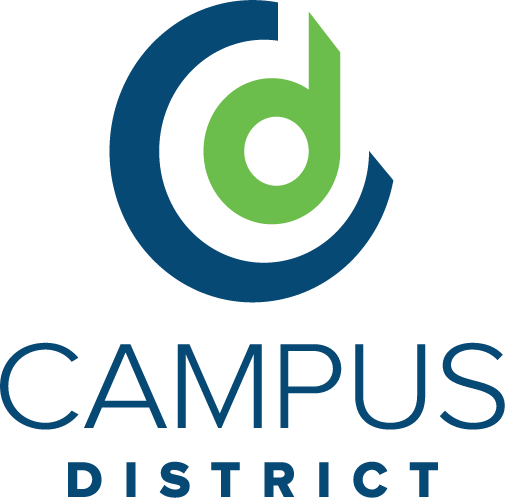Recently renovated Peavey Plaza in Downtown Minneapolis
After the close of Avenue of the Arts I packed my bags for Minneapolis, Minnesota for a three-day conference on social service outreach organized by Block by Block. For most Clevelanders, Block by Block is best known by the Downtown Clean and Safe Ambassadors who wear yellow jackets and steward our public spaces. Block by Block manages Ambassadors like Downtown Cleveland’s in cities all over the country. Nationwide, Ambassadors are funded through a mechanism called a Business Improvement District (BID), a geographic area within which property owners pay an additional assessment on top of their property taxes for clean and safe services. In Cleveland, you’ll find Clean and Safe Ambassadors in Downtown, Ohio City, Gordon Square, University Circle, Kamm’s Corner, and of course, the Superior Arts District. While BIDs were originally developed to help meet the need left by shrinking City services, over time they adapted to include outreach, specifically with individuals experiencing housing emergency.
Mosaic work on Minnehaha Avenue
September’s conference was an opportunity for BIDs all over the country to come together and discuss homelessness and outreach in our neighborhoods. The conference was facilitated by Kerry Morrison, the former director of the Hollywood Property Owners Alliance (HPOA). Throughout her 22 years as director, Kerry watched the number of cranes in the sky increase while the number of individuals on the street skyrocketed. Coming face to face with homelessness, substance abuse disorder, severe and persistent mental illness, she began interrogating Los Angeles’s system of support for those who are chronically homeless, specifically those experiencing severe mental illness. Her work finally led her to Trieste, Italy—a city recognized by the World Health Organization as one of the most advanced mental health care systems in the world. In short, since 1980 the city of Trieste has closed psychiatric hospitals and set up a network of 24-hour community mental health centers capable of dealing with the most severe conditions and of supporting clients in their daily life, with a view towards recovery and social inclusion. Today. Ms. Morrison is working to pilot these methods in Los Angeles.
Ms. Morrison charged each BID to describe the mission of their outreach and engagement function. Helena Miller, Downtown Cleveland’s Outreach Specialist for twelve years and counting, Steve Schultz, Block by Block’s Cleveland Operations Manager, and I discussed this together. Ms. Miller thoughtfully responded, “to meet people where they are, on their terms, and offer services to help shelter, house, and prevent homelessness”. With that strong and purposeful foundation anchoring our outreach work, the next question on my mind was what is our broader organizational responsibility to addressing homelessness?
Session notes from a discussion on systemic challenges faced by BIDs and their outreach workers.
Addressing homelessness from the lens of a community development organization or a BID is to scrutinize our urban planning—public space design, public transportation systems, safety and security in public space, placement of shelter and resources, etc. How can our role as an intermediary between business, educational institutions, service agencies, individuals and others be used to identify gaps that further harm individuals whose housing is insecure?
So, I returned to Cleveland ruminating on powerful conversation, our current work, and ways in which we can improve. One of our biggest growth areas is education—Helena, Steve, and I agreed that one of our responsibilities is educating our diverse stakeholders on homelessness, mental health, trauma, and the ways we can best support our neighbors struggling with housing insecurity. Below are the ways in which we are currently bringing the lens of homelessness to our work:
1. Infrastructure: Determine gaps in the built environment that increase challenges for those who are experiencing housing emergency. A current project CDI’s AmeriCorps VISTA, Morgan Clark, is working on researching is a free storage locker facility for individuals to store their items safely.
2. Transportation: Look for creative pathways to repair transportation gaps that limit mobility. The Fund for Our Economic Future’s Paradox Prize is a resource Campus District is currently exploring.
3. Programming: Program safe spaces where shelter guests, students, business owners, and others can work to build a more vibrant community that represents everyone. Campus District’s Payne Avenue Project is a current example.
4. Advocacy: Advocate and encourage affordable housing development in our neighborhood and advocate for a shared vision across BIDs nationwide that can be presented at the International Downtown Association Conference or the United States Conference of Mayors
5. Education: Work with our partners to develop a trauma informed community development training that speaks to a broad audience—from property owners to CDC partners—that brings clinical understanding into the mainstream, builds compassion, and is a tool that people can call upon in their day-to-day.
There is much work to do and tremendous work already being done in Cuyahoga County (see more in our news roundup below). We look forward to taking steps forward in partnership with those around us and taking notes from our Block by Block counterparts in other cities like Minneapolis.
-Rachel




